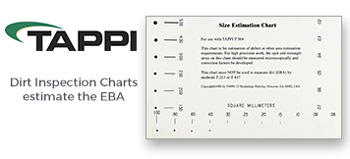 Search
Search
Use the search bar or filters below to find any TAPPI product or publication.
News

National Labs explore energy-efficient solutions for paper industry
Researchers at two national laboratories are developing new computer simulations that could help papermakers improve energy efficiency and cut energy costs. The project is part of the Department of Energy’s HPC4Mfg initiative, a multi-lab effort to use high-performance computing to address complex challenges in US manufacturing. Project outcomes could have significant benefits; the papermaking industry ranks third among the nation’s largest energy users, behind only petroleum-refining and chemical production, according to the US Energy Information Administration.
Multifunctional starch-based barrier materials, TAPPI Journal August 2021
Application: This paper highlights ways for industry to explore new ways of using starches for traditional and non-traditional barrier applications. TAPPI conference proceedings and presentations, technical papers, and publication articles provide technical and management data and solutions on topics covering the Pulp, Paper, Tissue, Corrugated Packaging, Flexible Packaging, Nanotechnology and Converting Industries. Simply select the quantity, add to your cart and your conference paper, presentation or article will be available for immediate download.
Webinars

Biofilm Control in Papermaking Webinar
This webinar will discuss: How to recognize the problems caused by biofilms, Understanding how biofilms are formed, Develop an understanding of the strategies used to control biofilm formation, & Identify the steps required to design and implement a biofilm control program.
Journal articles

Magazine articles

A new and quick testing method for evaluating commercial OCC recycled pulp, TAPPI Journal July 2024
ABSTRACT: In this paper, a new and quick testing method for evaluating commercial old corrugated cardboard/containers (OCC) pulp was developed and used by a large Chinese boxboard manufacturer for quality control of imported OCC pulp.
Journal articles

Magazine articles

Continuous digester rapid thinning, TAPPI Journal June 2024
ABSTRACT: Carbon steel continuous digesters built after the early 1980s are fully stress relieved, so stress corrosion cracking has been less of a concern. However, these newer digesters were designed to run modified cooking processes that have turned out to be much more corrosive than those running with conventional cooking. This corrosion is mainly associated with softwood digesters and appears to be flow related. Average corrosion rates of 40 mil/year are possible on the exposed shell between the wash and extraction screens. The corrosion patterns are visually distinct from surfaces in the upper digester and below the wash screens. This paper goes into practical detail on where it occurs, the causes, visual identification, inspection planning and results evaluation, and finally, how to mitigate this damage, which consists of applying a corrosion resistant barrier. Some discussion on dealing with general corrosion throughout the digester is included.
Journal articles

Magazine articles

Factors affecting deposit formation in foul condensate stripping systems, TAPPI Journal June 2024
ABSTRACT: In kraft pulp mills, foul condensates are often steam-stripped to produce clean condensate for use as process water. The formation of organic deposits in the stripped condensate is a common problem. A systematic study was conducted to examine the deposit composition and the most likely operating parameters responsible for stripped condensate contamination experienced at a kraft mill in Brazil. Daily averaged data of 170 operating parameters over a 15-month period were analyzed by means of multivariate discriminant analysis and random forest classification analysis. The results showed that the deposit formation is related to high temperature, pressure, and dry solids operations in various evaporator effects. These conditions, combined with the poor demisting efficiency in these effects, may have increased black liquor carryover mist in the vapor. Deposit formation also appeared to be related to increased throughput of the foul condensate stripping system and increased pressure in the stripper. Results of Fourier transform infrared spectroscopy (FTIR) and pyrolysis-gas chromatography mass spectrometry (Py-GCMS) analyses show that the deposit consists of mostly organic matter that likely originated from wood extractives and lignin.
Journal articles

Magazine articles

Comparing a linear transfer function-noise model and a neural network to model boiler bank fouling in a kraft recovery boiler, TAPPI Journal, July 2024
ABSTRACT: Boiler bank fouling reduces heat transfer efficiency in kraft recovery boilers. Here, we model the relationships between boiler parameters and boiler bank pressure drop, an indicator of fouling, based on recovery boiler operating data. We compared two models: an autoregressive integrated exogenous (ARIX) model and a feedforward neural network. The ARIX model better simulates boiler bank pressure drop compared to the neural network (R2 of 0.64 vs. 0.58). Based on the ARIX model, we identified six boiler parameters that significantly influence boiler bank fouling and their relative contributions. Finally, we demonstrate how the models can simulate boiler bank pressure drop given artificial perturbations in boiler parameters.
Journal articles

Magazine articles

Editorial: Special pulping and engineering issues of TAPPI Journal yield important recovery cycle research, TAPPI Journal June 2024
ABSTRACT: The June issue of TAPPI Journal, which is dominated by recovery cycle topics, is the last PEERS issue organized by Dr. Peter Hart, the fomer editor-in-chief who passed away this past May. Peter, who was heavily involved with TAPPI’s Pulp Manufacture Division and various pulping-related committees, also started working with conference technical program planning starting in 2005 with the Engineering, Pulping and Environmental (EPE) Conference, which was the precursor to the more recent Pulping, Engineering, Environmental, Recycling and Sustainability (PEERS) Conference. He was also involved with other conference planning, including that for the International Pulp Bleaching Conference. In addition, Peter was a yearly attendee of such conferences starting as far back as 1990.
Journal articles

Magazine articles

Evaluation of rice straw for purification of lovastatin, TAPPI Journal November 2021
ABSTRACT: Cholesterol synthesis in the human body can be catalyzed by the coenzyme HMG-CoA reductase, and lovastatin, a key enzyme inhibitor, can reduce hypercholesterolemia. Lovastatin can be obtained as a secondary metabolite of Aspergillus terreus ATCC 20542. In this study, rice straw of lignocellulose was used in aeration and agitation bath fermentation in a 1-L flask, and a maximal crude extraction rate of 473 mg/L lovastatin was obtained. The crude extract was treated with silica gel (230–400 mesh) column chromatography. Ethyl acetate/ethanol (95%) was used as the mobile phase, and isolation was performed through elution with various ethyl acetate/ethanol ratios. The highest production rate of 153 mg/L was achieved with ethyl acetate/ethanol in a ratio of 8:2. The lovastatin gained from the crude extract was added to 12 fractions treated with 0.001 N alkali, and acetone was then added. After 24 h of recrystallization at 4°C, the extract underwent high-performance liquid chromatography. The purity had increased from 25% to 84.6%, and the recovery rate was 65.2%.
Journal articles

Magazine articles

Online monitoring of the size distribution of lime nodules in a full-scale operated lime kiln using an in-situ laser triangulation camera, TAPPI Journal June 2024
ABSTRACT: To maximize efficiency of the recausticizing process in a pulp mill, producing a reburned lime with high and consistent reactivity is process critical. Prior investigations have demonstrated a correlation between the reactivity of lime and its nodule size, as well as the dusting behavior of the kiln. Therefore, monitoring the nodule size produced in the lime kiln could be a promising indirect method to measure the performance of the lime kiln. The objective of this investigation was to evaluate the utility of a laser triangulation camera for online monitoring of nodule size distribution for the lime kiln. A series of full-scale trials were performed in a lime kiln of a kraft pulp mill in which a camera was installed at the exit conveyor to analyze the lime discharging from the kiln. The nodule size distribution was analyzed for correlation with the lime temperature, flue gas temperature, and rotational speed of the kiln. The monitoring demonstrated temporal stability, and the results showed that the lime temperature had the most significant effect on the nodule size. The rotational speed of the lime kiln and the flue gas temperature showed limited effect on nodule size, but they had significant impact on the specific energy demand. The overall conclusion of the study is that the camera methodology effectively correlates lime temperature with nodule size distribution, and it advocates for the methods of implementation in automating lime temperature control, facilitating the production of consistently reactive lime at a lower specific energy consumption.





